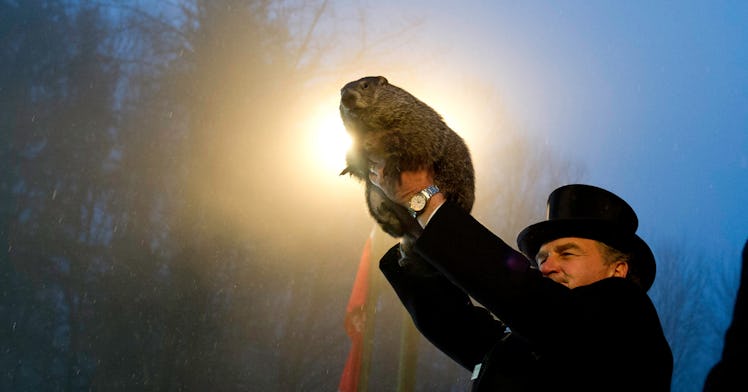This Pagan February Celebration Is Way Cooler Than Groundhog’s Day
February 2nd is a day of great significance — not just in Pennsylvania — but in many different cultural contexts.

Every February, Americans across the country await the news from a groundhog who will predict just how much longer winter will last — and if it will soon turn into spring.
More specifically, whether we can expect six more weeks of winter, or if spring is just around the corner. Scientific inaccuracies aside (Punxsutawney Phil is notoriously not an accurate source for weather predictions), the day actually has far more significance, across many cultures, than just being a day a rodent comes out of the ground.
Groundhog Day is more interesting than it appears – the day is based on astronomy, and even has links to Christian and Pagan holidays. In other words, Groundhog Day is way cooler than the dang groundhog.
What is Groundhog Day?
Since 1887, February 2 has marked the day that a groundhog named Punxsutawney Phil makes a weather prediction in Pennsylvania. If he sees his shadow and it’s sunny, six more weeks of winter is predicted. If he doesn’t see his shadow and it’s cloudy, spring will come early. Most of us have grown up knowing this weather predictor, but the practice of using the weather to predict seasons has been around forever.
As it turns out, “Groundhog Day is an astronomy holiday – a cross-quarter day – falling approximately midway between the December solstice and the March equinox,” EarthSky says. But what does that all mean?
What is a cross-quarter day?
We all know that the calendar year is broken into four seasons. Part of those four seasons are cross-quarter days, too. These cross-quarters are a collection of dates that land midway between the equinoxes and solstices – aka spring, summer, fall, and winter.
“The division of the year into segments is a common theme in human cultures,” EarthSky reports. “It makes sense because our ancestors were more aware of the sun’s changing movement across the sky. They had to be since their plantings and harvests depended on it.”
There are four cross-quarter days, including February 2, called Candlemas; May 1, called May Day; August 1, called Lammas; and October 31/November 1, called All Hallows, which we celebrate as Halloween.
Many cultures, both historically and currently, celebrate during these cross-quarter days. For us, that means the Groundhog. For
What does Groundhog Day have to do with a cross-quarter day?
The first cross-quarter day of the year falls on February 2 – aka Groundhog Day. The middle point between winter and spring when the seasons start to change is a common holiday celebrated among many cultures both historically and currently.
For example, February 2 also marks the Feast of the Presentation of Jesus Christ– a Christian holiday or Imbolc – a pagan holiday. Several countries around the globe celebrate in various ways, all rooted in how the sun and Earth move around each other.
Cool, right?